
Polygraph Design
Happy ending for fruit
The banana has black spots, the bell pepper is all shrivelled – and doesn’t the milk smell a bit off? Straight in the bin. The average German throws out about 55 kilograms of food per year – that’s 150 grams per day. Often the food is not rotten at all, but just no longer looks appetising. Fruit, vegetables and baked goods make up a large portion of food waste.

Polygraph Design
The German Federal Ministry of Food and Agriculture plans to cut food waste by half – or even less – by 2030. Projects with political support have joined forces with private initiatives to commit themselves to this goal by sharing food and reusing leftovers.
Projects and examples
Foodsharing e.V.
This initiative has been working to save food since 2012. Leftover products are offered by companies or private individuals via an online platform. Volunteers pick up fruit, vegetables and other goods and distribute them to the food rescue community or to people in need. Those who want to drop off perishable food quickly before their holidays can also go directly to so-called “Fair-Teiler” points – freely accessible food collection points with refrigerators. More than 200,000 users have registered in German-speaking countries. Every day, 1,000 collections are carried out. In this way, every year, around ten tons of food are rescued from supermarkets, bakeries and farms.
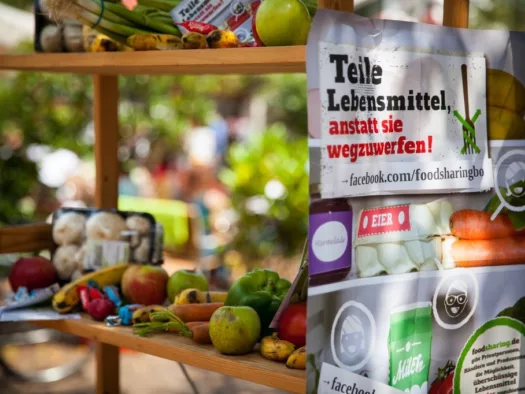
"Fair-Teiler" of Foodsharing e.V. in the city centre.
Photo: foodsharing e.V.
Mundraub.org
Far too often, the fruit on fruit trees along country roads or in public places is left rotting on branches or drops unplucked to the ground. The mundraub.org project provides an online map of shrubs, bushes and fruit trees that are free to be harvested by everyone. Many thousands of people already use the portal, visit the sites, report new ones, and share experiences and recipes in forums. For Berlin alone, more than 2,000 sites are listed.
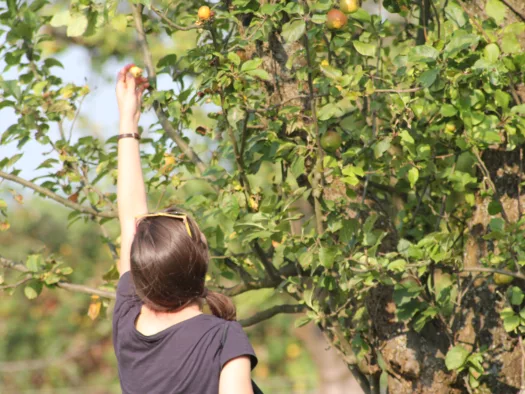
Harvesting from publicly accessible fruit trees.
Photo: mundraub.org / Terra Concordia gGmbH
Supermarket for throwaway goods
Food that wholesalers cannot sell – also known as “surplus food” – is offered in the “Sirplus” supermarket. Sometimes the goods’ best-before date has expired; sometimes the fruit and vegetables don’t look appetising enough. The employees of “Sirplus” check the products for their edibility and then offer them for sale in their stores. In this way, wholesalers get rid of their surplus goods and save the cost of disposal into the bargain. Non-profit organisations such as “Die Tafeln” are always prioritised for receiving food distributions.
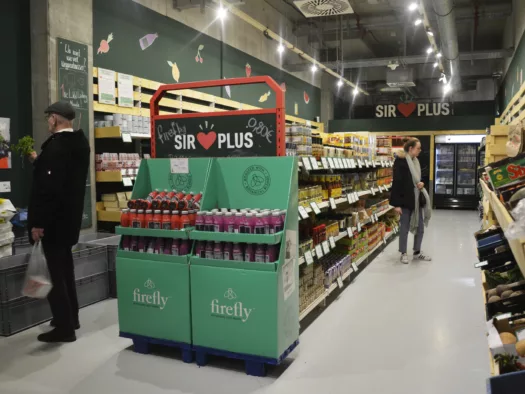
A "SIRPLUS" supermarket with disposable goods.
Photo: SIRPLUS GmbH
Die Tafeln e.V.
The “Tafeln” have been firmly established in food rescue for decades. They collect surpluses from wholesalers or supermarkets and distribute them to the socially and economically disadvantaged. But the range of services offered by the “Tafeln” goes even further. For many people they’re also meeting places: in some cities, the “Tafeln” organise cafés, prepare free meals, and hold clothing markets and book exchanges. Around 30,000 grocery shops are involved and about 264,000 tons of food are collected every year. A digital platform is envisioned in order to save even more food and create interfaces between the “Tafeln” and wholesalers.
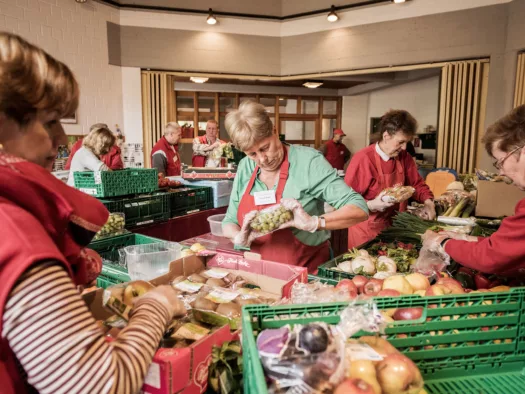
Sorting the "Tafel" goods before distribution, Berlin-Tempelhof distribution centre.
Photo: Dagmar Schwelle / Die Tafeln e. V.
Surplus á la carte
More and more restaurants and catering companies are making efforts to reuse unsaleable food. The Berlin-based non-profit organisation “Restlos glücklich” has set an example of how to make excellent meals out of food destined for the bin. In the kitchens of conventional restaurants, too, there is often leftover food. Platforms like “Too good to go” or “ResQ Club” help save this food. Every day at closing time, many restaurants and bakeries offer leftover meals and goods for pickup at a reduced price.
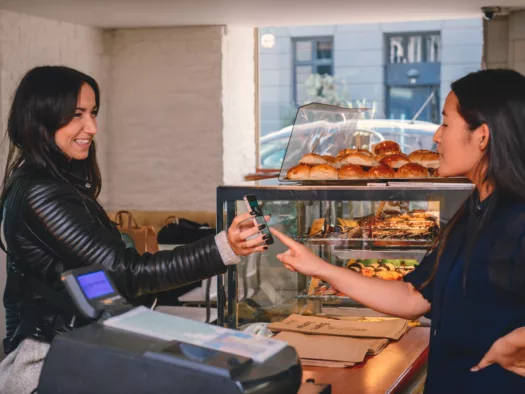
Collecting leftover meals from the restaurant.
Photo: Too Good To Go GmbH
Smart packaging
Is that still edible? That’s a question we often ask ourselves when gazing into our refrigerators. If in doubt, we’d rather throw food away than eat potentially rotten goods. Fraunhofer Institutes have been researching a way to counteract this squandering. The idea is to develop packaging that determines whether food is still edible. This could be facilitated, for example, by means of chemical substances in the lid of the packaging. These substances function like sensors that react to gases or spores produced when food decays. For example, a piece of meat that’s no longer edible would cause the packaging to change colour.
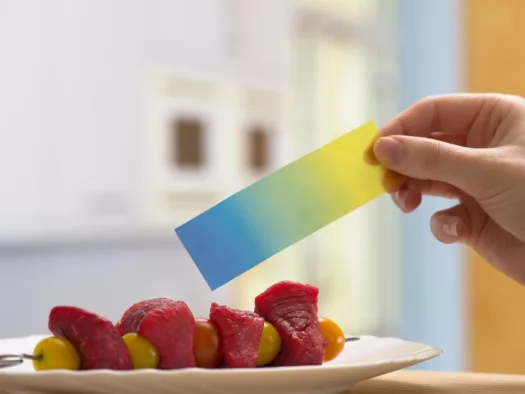
Colour-changing materials can be used to indicate the freshness of food.
Photo: Fraunhofer EMFT / Bernd Müller